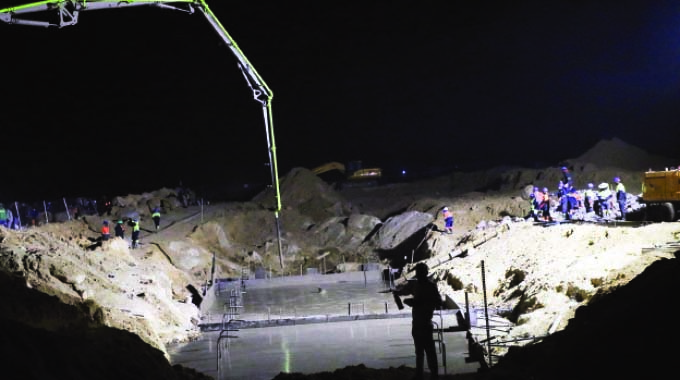Boran quarantine station boost for livestock genetics

Ivan Zhakata-Herald Correspondent
The Government has launched the first-ever Boran Quarantine Station to boost livestock genetics in the country and increase the national herd to 5,5 million by 2025.
The Boran Quarantine Station is also believed to be the only one in Africa and will attract farmers from across the continent, enhancing the livestock sector in the country.
It has a holding capacity of up to 20 cattle at a time for artificial insemination and embryo transfer for genetic transmission into the national herd.
A Boran cow or bull is medium in size with a short head, small ears, loose dewlap, and a large hump above the shoulders and they can be horned or polled.
Speaking at the launch of the Boran Quarantine Station at the Agricultural Research Trust (ART) Farm yesterday, Permanent Secretary in the Ministry of Lands, Agriculture, Fisheries, Water and Rural Development, Dr John Basera, said the quarantine station will go a long way in achieving the country’s intended targets in the livestock sub-sector.
“We are launching a Boran Quarantine Station which is the first in Zimbabwe and maybe one of the first in Africa,” he said.
“We did this because we believe that for us to grow our livestock sub-space we need genetics, especially pure genetics and this quarantine station is the hub for sources of genetics for our livestock space.
“According to the livestock recovery plan, we intend to target four facets of our livestock subspace so that the livestock subspace can contribute significantly to the US$8,2 billion agricultural economy by the year 2025.
“The livestock sub-sector is supposed to contribute about 25 to 35 percent. Issues around genetic improvement are of critical importance. Issues around animal health and averting poverty are also of critical importance due to the provision of animal feed.”
Dr Basera said the quarantine station will go a long way in terms of achieving the country’s intended targets, especially in the livestock sub-sector.
“The station is not only focusing on the Boran, but on other breeds such as the Mashonas and Nguni among others which we also need for climate change adaptation,” he said.
“We need genetics so that our herd can be able to adapt to the vagaries of changing weather conditions and scourges of diseases. From one bull we can get thousands of straws of semen so it is basically based on science”.
Mr Luarenz Kruger from the Boran Veterinary Group said through the quarantine station they will be able to export Zimbabwean genetics across Africa and the world at large.
“The animals get into the quarantine and then get tested for diseases. Those animals will be released after 30 days and the tests have to be negative. If one of them tests positive, we will then remove the whole batch. If they are negative, then we take the semen,” he said.
Chairman of the Zimbabwe Boran Breeders Society, Mr Mark Hook, said the quarantine station will help in increasing the population of Boran breeds in the country.
“We have resuscitated the Boran breeds since 2007 and we believe that this will uplift the rural herds. A Boran is good for cross-breeding with all breeds, especially the Zimbabwean Mashona and the Nguni breeds,” he said.








Comments